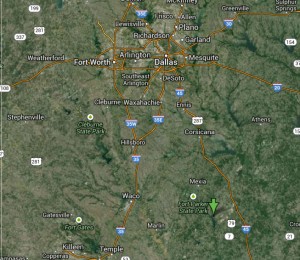Rick Perry
Between Now and Friday: Tell Them What They Can Do With Their Smog
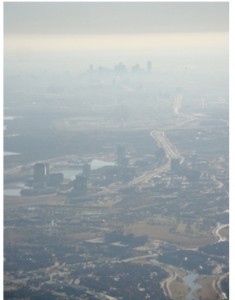 Frustrated that Rick Perry's Texas Commission on Environmental Quality isn't doing enough to end DFW's chronic smog problem, the local "Council Of Governments" has issued a "Request for Information" asking for the public's help in suggesting ways to reduce ozone pollution in North Texas.
Frustrated that Rick Perry's Texas Commission on Environmental Quality isn't doing enough to end DFW's chronic smog problem, the local "Council Of Governments" has issued a "Request for Information" asking for the public's help in suggesting ways to reduce ozone pollution in North Texas.
Please use our Click N' Send E-mail form to make sure they get the message that the public wants:
1) State-of-the-Art pollution controls on huge "point sources" of pollution like the Midlothian cement kilns and East Texas power plants.
2) New pollution control equipment and strategies to reduce the air pollution from the thousands of natural gas facilities mining the Barnett Shale.
3) Inclusion of all trucks and off-road vehicles in the state's vehicle maintenance and inspection program.
You can also add strategies or ideas of your own as well. Just click here, fill out the e-mail and send it in to be counted.
It takes as little as 30 seconds.
BUT YOU ONLY HAVE UNTIL 5 pm FRIDAY, VALENTINE'S DAY.
______________________________________________________________
Rick Perry's TCEQ is so discredited on the matter of DFW smog, local officials usually working in concert with the state agency are now looking elsewhere for help.
Ever since DFW was required to write and submit new clean air plans, The North Central Texas Council of Governments has been the local vehicle used by the state to funnel information, concern, and ideas back and forth.
It was never easy to get Austin's attention or convince the Powers That Be of the need to take bigger clean air measures. It took a decade for Downwinders to get the State to admit that the Midlothian cement plants had a huge impact on local air quality before they were the targets of new controls.
But ever since Rick Perry began running for President in 2010, it's been impossible for Austin toget serious about any DFW clean air plan. For the past four years, TCEQ has claimed that it can reduce air pollution enough by doing nothing.
That strategy has been a dismal failure. New car buying in the middle of the worst economic downturn since the 1930's was the TCEQ clean air plan in 2011. Austin promised that if we just sat back, we'd have the lowest smog levels ever recorded. Instead we had worse air pollution levels than we did five years ago.
This time round, TCEQ is saying a new EPA-mandated low-sulfur gasoline mix in 2017 will be the region's savior for the new clean air plan that's supposed to be successful in reaching the new federal ozone standard of 75 parts per billion in 2018. We're at 87 ppm now – still in violation of the old 1997 standard.
Just watch this new fuel being added to cars and see the ozone numbers drop, TCEQ is saying. No need to put controls on gas facilities, or cement kilns, or power plants. Nothing that would give Rick Perry's opponents on the Right any opportunity to claim he was "anti-bidness."
Even the Council of Governments isn't buying it.
That's why, in their own bureaucratic fashion, this Request for Information that the COG has issued is it's own middle-of-the-road middle finger to TCEQ.
Usually, it would be the state facilitating a discussion of new air pollution control strategies, but since it's obviously not interested, the COG has decided to go its own way. That's how bad things have gotten in Austin – even their most reliable allies in DFW can no longer take them seriously.
It's not clear what will happen to the list of control measures that the Council of Governments is assembling. Some might receive some more official attention, but locals have no authority to write or override Austin's decisions. TCEQ is the only entity that's authorized to submit a new clean air plan to EPA by the June 2015 deadline.
But there are ways to use the useless clean air plans that Austin is submitting. Downwinders' own green cement campaign is a great example.
In 2007, we successfully inserted a voluntary air pollution control strategy into the TCEQ plan revolving around the purchasing of cement from newer cleaner "dry" kilns by local North Texas governments. We then took that "green cement" procurement option and went to Dallas to pass the nation's first green cement ordinance. Then Fort Worth passed it. Then Plano. Then Arlington. Then Denton. Then Dallas County. Then Tarrant County.
Within two years, we had established a de facto moratorium on dirtier "wet kiln" cement within at least a dozen municipal and counties. Combined with federal rule changes, we were able to get all Midlothian wet kilns closed. The last one is being be converted to a dry kiln this year. All while Rick Perry was governor.
The same thing could happen with a good "off-sets" policy for gas facilities if a local city of county could pass a template ordinance showing the way. Currently, most of the gas industry is exempt from being required to "off-set" their air pollution in smoggy "non-attainment" areas like other large industries in DFW. Take away this exemption and you'll see a swift decrease in gas industry air pollution.
It's these kinds of strategies that don't depend on action from Austin that offer the greatest potential for progress this time around.
TCEQ has never written a successful clean air plan for North Texas, and it's not going to start now. But citizens themselves can take their lungs' fate into their own hands and begin to build a system of local measures that can make breathing easier.
______________________________________________________________
CALENDAR AND STATUS REPORT OF DFW'S NEWEST CLEAN AIR PLAN
Reach a 3-year rolling average of no more than 75 ppm of ozone at all 18 DFW area air monitors.
The New Gas Pollution Problem for DFW in Two Pictures
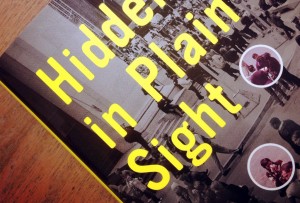 So far the debate over how much impact the gas industry has had on DFW air quality has centered on the Barnett Shale. That's logical because that's the gas play right in front of us, in the middle of the North Texas "non-attainment area" for smog. One of the main arguments Rick Perry's Texas Commission on Environmental Quality has made against any significant impact is that most of the drilling is happening west of the DFW urban centers.
So far the debate over how much impact the gas industry has had on DFW air quality has centered on the Barnett Shale. That's logical because that's the gas play right in front of us, in the middle of the North Texas "non-attainment area" for smog. One of the main arguments Rick Perry's Texas Commission on Environmental Quality has made against any significant impact is that most of the drilling is happening west of the DFW urban centers.
Ignoring how geographically-incorrect this argument is – there's drilling and compressors in Dallas County right now, much less Ellis, Johnson. Denton and Tarrant – let's just cede the argument to the state that it would take gas fields to the Southeast of us, that is, upwind of us during ozone season, to really impact our air quality.
Guess what? There's gas fields Southeast of DFW that are producing lots of air pollution.
In previous posts over at least the last two years, we've shown that if you add up the standard permits of all the gas compressors in Freestone County alone, they represent more smog pollution than the Big Brown Coal Plant doing business down the road. Now there's new evidence of the size of these gas fields and their relationship to the DFW airshed, thanks to Google.
Here's a picture of the area we're talking about – just about an hour and a half drive southeast of DFW, east of Waco. That makes it directly upwind during ozone seasons.
When you zoom into where the green arrow is, you see the familiar sight of hundreds of square drilling pads laid out over the landscape – just like the Barnett Shale – only DFW is directly downwind of it during the summer.
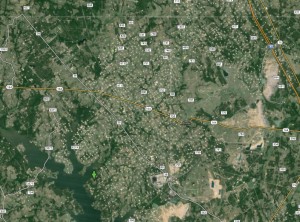 Pollution from these sources has most likely been grossly underestimated by the state. Moreover, when gas field pollution comes into an urban area with dirty air, it increases the likelihood of that pollution turning into smog. Rick Perry's employees are loath to admit the gas industry plays any part in the stagnation of DFW air quality progress since 2007, but as these images make clear, facts on the ground trump their ideology.
Pollution from these sources has most likely been grossly underestimated by the state. Moreover, when gas field pollution comes into an urban area with dirty air, it increases the likelihood of that pollution turning into smog. Rick Perry's employees are loath to admit the gas industry plays any part in the stagnation of DFW air quality progress since 2007, but as these images make clear, facts on the ground trump their ideology.
Cement Plants and Gas Plays Affecting Ozone Levels In….San Antonio?
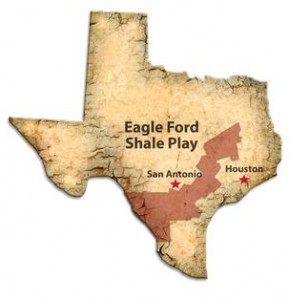 For decades DFW was the only major urban area in Texas to have its air quality challenged by the cement industry. Repeated modeling over the course of the last several local air plans showed that the concentration of the plumes from three huge cement plants in Midlothian could increase downwind ozone levels significantly. Part of this is the voluminous emissions produced by the kilns and part of it's location, location, location – the close proximity of these cement plants to the center of DFW. So much so that you can see their smokestacks from I-20 in Grand Prairie and Arlington.
For decades DFW was the only major urban area in Texas to have its air quality challenged by the cement industry. Repeated modeling over the course of the last several local air plans showed that the concentration of the plumes from three huge cement plants in Midlothian could increase downwind ozone levels significantly. Part of this is the voluminous emissions produced by the kilns and part of it's location, location, location – the close proximity of these cement plants to the center of DFW. So much so that you can see their smokestacks from I-20 in Grand Prairie and Arlington.
Then beginning in 2006 or so, the area's air shed began to be reshaped by the presence of gas production facilities as the Barnett Shale was opened up to exploitation from fracking, a process freshly exempted from just about every federal environmental regulation with passage of the 2005 Energy Act. But unlike large "stationary sources" like cement plants, these gas facilities were spread out over a large area, right in the middle of the Metromess, and were except from the "off-set" requirements of other large polluters. Even though their collective emissions were as large or larger than any other single industrial source, their decentralization allowed their operators to release their tons of pollution into the air without ever having to consider its impact on local smog levels.
That one-two punch of local industrial pollution flies in the face of the office park business image of DFW. Houston has traditionally been the city where industry has made it harder to breathe. In North Texas, it's supposed to be all about cars and trucks. But those cars and trucks lay a mostly uniform blanket of ozone over the entire area, whereas the gas production facilities and the cement plants are concentrated fire hoses of smog-forming pollution that can impact specific monitors over and over again.
And all of this has taken place during a time when the official federal ozone standard has been a relatively high 85 parts per billion. Beginning in 2015, the standard becomes 75 ppb, and it might drop to 65-70 by 2020.
Texas cities like Austin and San Antonio have had little problem complying with the higher standard, but now face obstacles to coming in under the wire of a 75 ppb rule.
For one thing, the only other large concentration of cement plants in Texas besides Midlothian is located along the I-35 corridor from Buda, south of Austin to North San Antonio. Because prevailing winds have often carried the pollution from these plants away from central Austin or San Antonio, they haven't been seen as much of a threat. But now urbanization is increasingly creeping westward into the downwind path of these plumes, adding some heft to the emissions and combining with them to elevate ozone levels.
And then there's the Eagle Ford Shale gas play, the new Wild West of fracking in Texas, taking place directly upwind of central San Antonio. Unlike the urban drilling in the Barnett Shale, most of the activity in the Eagle Ford is taking place in unincorporated parts of South Texas counties. There haven't been any reliable emissions inventory of the pollution coming out of he Eagle Ford, but it's considerable. Anecdotally, there seems to be a lot of flaring that DFW never saw. Because of the amount of production taking place, as well as its location upwind during the summer "Ozone Season," Central Texas is starting to sweat about its impact on its own air quality.
That concern has prompted a regional modeling exercise which is supposed to determine how much, if any, impact the drilling in the Eagle Ford is having on the Alamo City's air. Back in July, we reported that the preliminary numbers of this study showed that gas production was capable raising local ozone levels by as much as 3 to 7 parts per billion by 2018 – exactly when all Texas cities must be in compliance with the new 75 ppb standard.
Maybe 3-7 ppb doesn't seem like much. And it isn't, unless you're already at or above the new 75 ppb standard and that amount will put and keep you over that red line. Like San Antonio in 2013. The July headline in the San Antonio paper was unambiguous: "Eagle Ford drilling is polluting San Antonio's air"
But it looks like someone at the San Antonio Council of Governments is taking a page from DFW and TCEQ officials and downplaying those preliminary numbers from last summer.
Previous studies show that emissions of ozone-forming chemicals from sources other than drilling have dropped significantly since 2007 despite the city's population growth, said Steven Smeltzer, AACOG's environmental manager. Smeltzer attributes the improvement to new vehicle standards and voluntary reductions by local industries.
Preliminary numbers from the AACOG study also indicate that much of the problem lies in the Eagle Ford. InsideClimate News obtained a copy of the data, which have not been made public. The data show that during the months when San Antonio experiences the highest ozone levels—April through October—oil and gas development produced about half the amount of ozone-forming emissions per day as all other industrial sources combined.
Bella said the data came from an early version of the study that wasn't as thorough as later drafts. "My sense is they're really not worth using…They're not solid numbers."
He declined to comment on whether the numbers are close to the latest estimates. What matters isn't the number, he said, but the process behind the study. If the science isn't right, then it's "garbage in, garbage out."
Yeah, we know. Believe it or not, citizens had to literally force the TCEQ to consider the effect of the pollution from Midlothian cement plants before they discovered, wow, they really do have an impact. Likewise, it took Dr. Al Armendariz's 2009 study of Barnett Shale pollution for the state to even consider local gas sources might be a contributing factor to the DFW smog problem – although TCEQ officials are still doing their best to deny it. The largest purveyor of junk science in Texas is the Texas Commission on Environmental Quality. Remember that in 2012, TCEQ's computer model told us to expect the lowest level of smog ever recorded in DFW. Instead we got the highest levels recorded since 2008 or so. So yeah, GIGO.
That's why it's disappointing to see the Council of Government official try to use the same strategy with this new study – whose final edits will be made by TCEQ, not an independent entity. Just like with TCEQ's Wednesday's ruling against 7000 Dallas County doctors that said there's no link between smog and public health, Rick Perry's agency can't afford to admit the state's gas plays are making the state's air illegal and unsafe.
Like San Antonio, almost every other category of pollution in DFW has decreased over the last 6 years – except gas industry pollution. It's the one category of emissions that's grown and grown and grown – to the point where the state itself admitted that the industry was releasing more smog-forming Volatile Organic Compounds than all the trucks and cars on the road in North Texas. As DFW continues to linger in violation of an almost 20-year old obsolete ozone standard, it's the gas industry that is the logical culprit for the backsliding. It's the one variable that's going the opposite direction as all the others. But despite the overwhelming evidence to the contary TCEQ is busy defending the Shale from any charges that it has the least bit of impact on area smog, even to the point of ignoring basic air modeling chemistry.
San Antonio officials may want to deny the link between the Eagle Ford and smog in their city, may want to down play it, and they'll have plenty of rhetorical help from Austin. But when it comes to TCEQ rhetoric versus the real world, the monitors in the field tell the tale. Negligence doesn't make your air cleaner.
Poultry Expert to Doctors: You’re Wrong, Ozone Doesn’t Cause Asthma
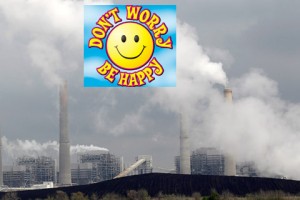 Feigning allegiance to some sort of science the scientists themselves don't use, the Texas Commission on Environmental Quality rejected a petition by the Dallas County Medical Society to put new pollution control equipment on three large coal power plants upwind of DFW, saying there's no real conclusive evidence that smog causes respiratory problems like asthma.
Feigning allegiance to some sort of science the scientists themselves don't use, the Texas Commission on Environmental Quality rejected a petition by the Dallas County Medical Society to put new pollution control equipment on three large coal power plants upwind of DFW, saying there's no real conclusive evidence that smog causes respiratory problems like asthma.
It may come as a surprise to newcomers, but the largest state environmental agency in the U.S. has never recognized a connection between ozone pollution, or smog, and respiratory problems. Austin has fought the implementation of every new ozone standard ever proposed by EPA and played down any causal link suggested by recent studies. If you want to know what's behind the current push in the US House of Representatives to discredit the historical "6-Cities Study" – the basis for the original connection between smog and public health, look no further than the Texas Commission on Environmental Quality, where such mainstream science has never been accepted. It's not in industry's interest, or the pro-industry-constantly-running-for-something Governor, whose fingerprints so besmirch the TCEQ these days, even new file clerk positions are considered ideological appointments.
TCEQ Chairman Bryan W. Shaw said studies suggest that cutting ozone alone might not prevent asthma attacks.
“I’m convinced that it doesn’t make sense to get ahead of the science,” Shaw said. He later added, “I don’t want there to be this knee-jerk reaction.”
Commissioner Toby Baker said asthma has “a wealth of confounding factors.” To assume that a correlation between high ozone and asthma hospitalizations means ozone causes asthma is “frankly irresponsible,” Baker said.
That would be Bryan Shaw, A&M Poultry Science major, and Toby Baker, A&M Public Administration major. Both of them have the same amount of expertise in medicine and public health, which is to say none. But that doesn't stop them from discounting the doctor's own experience with layers of condescension.
“We’re still seeing harm to our patients on high ozone days,” Dr. Robert Haley, a professor at UT-Southwestern Medical Center, told the commissioners. “The fact remains that the Dallas-Fort Worth area has among the worst ozone levels in the nation, Dr. Robert Haley, a professor at UT-Southwestern Medical Center, told the commissioners.“
But the Commissioners had an answer for that concern too: just wait for our next DFW clean air plan! In 2015! To address smog problems that don't worry us at all! That will be just as effective as the last one! Which ended with higher ozone levels than when it started! Which is why we definitely do not need to better control the air pollution from big, obsolete coal plants!
See how that little bit of misdirection works?
The only way DFW will ever see real clean air progress while Rick Perry's TCEQ is in charge is if local governments do it on their own. No amount of professional public health concern is enough to outweigh the total Rick Perryization of the agency. Not even when it comes from 7000 Dallas County doctors.
Meanwhile, good on Public Citizen, Dr. Haley, and the Dallas Medical Society for creating the most high-profile intervention to date into DFW air pollution politics by the local medical community. And we'll hold Haley to his promise that the group is going to "continue to push for cleaner air," because folks could sure use the help – and not just with East Texas coal plants. Soon they'll be meetings of the North Texas Clean Air Steering Committee to discuss that next TCEQ air plan for DFW. It's a local air policy committee with no health professional as a member. Perhaps The Dallas Medical Society would like a seat?
And on Thursday November 7th, the EPA is hosting what it calls a "listening session" on proposed new rules for carbon emissions from all power plants including the East Texas coal-powered ones, at the downtown Dallas Library from 10 am to 3 pm. Implementing these rules would most likely internalize too many of the costs that are being absorbed by the environment now for these dinosaurs to keep operating profitably. So even though the docs lost the battle in Austin on Wednesday, the war is still capable of being won. Stay tuned.
Your Tax Dollars at Work: TCEQ Argues Air IS NOT a Natural Resource
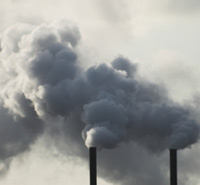 So this is how ideological things have become at the Texas Commission for Environmental Quality. Even though the agency won a fight in court to keep a group of parents represented by the Texas Environmental Law Center from being able to sue the state for not regulating Greenhouse Gases, TCEQ lawyers are working overtime to make the judge in the case retract this statement:
So this is how ideological things have become at the Texas Commission for Environmental Quality. Even though the agency won a fight in court to keep a group of parents represented by the Texas Environmental Law Center from being able to sue the state for not regulating Greenhouse Gases, TCEQ lawyers are working overtime to make the judge in the case retract this statement:
“The Court will find that the Commission’s conclusion, that the public trust doctrine is exclusively limited to the conservation of water, is legally invalid. The doctrine includes all natural resources of the State."
To the untrained eye, this might seem a pretty innocuous piece of prose. Water, air, land, these are pretty much the very definition of "natural resources." But them are fightin' words to Rick Perry's environmental watchdogs. Concede this point to the hippies, and there's a slippery slope leading all the way down to effective regulation and supervision of airborne threats to the public health. Unacceptable.
You see under state law, only water is legally treated as a natural resource in Texas, subject to what's called the "public trust doctrine," which requires government to protect and maintain certain shared resources fundamental for human existence.
TCEQ lawyers are saying air just isn't so fundamental to humans as the wet stuff, although the last time we checked, most people could only last 2 to 5 minutes without it.
State lawyers late last month argued in front of the Texas Third Court of Appeals that Judge Triana’s comments were beyond the scope of the case and should be vacated.
Terry Clawson, an agency spokesman, said….“The T.C.E.Q. has concerns with how the district court opinion addressed the matter of public trust doctrine,” Mr. Clawson added. “The scope of this doctrine is a very important issue, which deserves to be fully vetted.”
The agency complained to the court that Judge Triana’s statements were seen by the plaintiffs “as a victory,” even noting that environmental groups had called her ruling “a blockbuster” for their cause in news releases.
But David Spence, a professor of business and law at the University of Texas at Austin, said the scope of public trust was more symbolic than practical.
“In a sense it’s a kind of low-stakes argument,” Mr. Spence said. “The public trust doctrine in the U.S. is a fairly weak thing.”
Each state applies the principle differently, and few have used it with much force. The doctrine has generally been successful only at protecting open beaches for public use, Mr. Spence said.
So which is it – practical or symbolic? For both citizens and the TCEQ, the two are one in the same. Rick Perry's appointees cannot afford to let citizens get their foot in the legal door to establish a principle that may result in one day overriding their own authority, however abstract it appears that threat is now.
Likewise, in a state government as hostile to citizen concerns as this one, what do you have to lose in trying to establish a, er, beachhead, in terms of seeing safe and legal air as a finite "natural resource" that should be protected? Indeed, one of TCEQ's predecessor's names was the Texas Natural Resources Conservation Commission. It regulated air pollution in Texas – presumably because it was a Natural Resource. This "Hail Mary!" legal strategy seems at least as effective as going down to Austin every two years expecting things to get better.
The appeals court is expected to rule soon. It could remove the statement entirely from the record the way TCEQ wants, or merely say is a statement and not a legal precedent, which is what even the plaintiff's lawyers expect. Stay tuned.
State Ignores Latest Failure and Local Air Committee, Will Host “Public Information Meeting” on DFW Smog
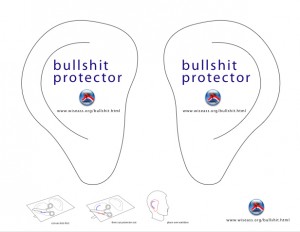 This curt announcement went out last Friday courtesy of the Texas Commission on Environmental Quality:
This curt announcement went out last Friday courtesy of the Texas Commission on Environmental Quality:
The Texas Commission on Environmental Quality (TCEQ) will host a public information meeting to provide information on the development of revisions to the SIP for the 2008 ozone National Ambient Air Quality Standard (NAAQS) in the 10-county Dallas-Fort Worth (DFW) nonattainment area. The meeting will take place on Thursday, September 5, 2013 at 10:00 a.m. at the North Central Texas Council of Governments (NCTCOG), Transportation Council Room, 616 Six Flags Drive, Arlington, Texas 76005. NCTCOG and United States Environmental Protection Agency (EPA) representatives will also provide updates on local and federal initiatives.
What this doesn't say is that the last local clean air plan drafted by Rick Perry's TCEQ failed miserably last summer when DFW actually ended up with worse air than when it had begun in 2010. The state can't even bring itself to admit that. It's never had a successful smog plan in DFW, but only Rick Perry's TCEQ plan actually made the air worse. Maybe that's why they're holding this "public information meeting" at a mid-morning time guaranteed to result in a low rate of participation by actual DFW citizens.
You'd also never guess from this release that DFW has a local advisory board for drafting its own clean air plans. The North Texas Clean Air Steering Committee was constituted specifically for the purposes of working with the state on such plans. It hasn't met in two years. Nor is it likely to meet anytime soon if Rick Perry's TCEQ has its way – the state considers it a nuisance to have to come up here and explain itself to local elected officials and environmentalists.
Did we say environmentalists? Since the 2006-2007 smog plan, citizen groups have held three seats on the Committee to balance out the three seats given the local Chambers of Commerce. Right now those seats are held by Downwiders at Risk, the Sierra Club/Public Citizen and the Environmental Defense Fund. The rest of the slots are filled by local city council members, Mayors, County Commissioners and County Judges.
Downwinder's own Jim Schermbeck is a member and has used the meetings of the Committee to cross-examine Rick Perry's TCEQ officials who otherwise receive a mostly unquestioning welcome everywhere else they go. Committee meetings are the one place that representatives fo citizens groups can ask questions like a legislator in an Austin hearing. And the TCEQ reallly doesn't like that. Especially when we've been right about so many things and the TCEQ so wrong.
It's also true that Rick Perry's TCEQ really doesn't even bother to start any kind of consultation or planning process in DFW until a year before the plan is due. Since a new plan to achieve the new ozons/smog standard of 75 parts per billion doesn't kick in until 2015, it's doubtful the Committee will be called to order before next Spring. That way the pollution control measures needed by any plan have no chance of passing a state legislature at the last moment in 2015, ensuing that no real changes take place and DFW remains smoggy.
Perhaps you think that's way too cynical a perspective. But that's exactly what happened this last cycle in 2010-2011. And it was actually worse, because the biggest part of that last plan was to sit back and watch as DFW residents bought new cars. No moving parts.
Meanwhile, can anyone name a current local elected official who's known for their advocacy of clean air? Dallas Mayor Laura Miller fought Perry's coal plants in 2006. in 2013, her successor, Dallas Mayor Mike Rawlings protects secret deals with gas drillers. Dr./Mayor Cluck in Arlington has voted in favor for dozens, if not hundreds, of gas wells near homes, parks, and day care centers even as he recites his familiar litany about running into childhood asthma victims in the hospital emergency room. Fort Worth? Bought and sold to Chesapeake. Dallas County? They're too busy indiscriminately dropping pesticides on us. Mayor Evans of Plano used to be a voice of reason in Collin County. Now you've got Judge Keith Self who never met an air polluter he didn't liked.
Some stalwarts like Parker County Judge Mark Riley and Tarrant County Judge Glenn Whitley still represent moderate Republican views, but many of their peers have been replaced by Tea Party members who think smog is as imaginary a problem as climate change. We're actually going backwards in our local political engagement of the issue.
If TCEQ is emasculating the local advisory group on clean air, it's certainly getting a valuable assist from a feckless DFW indigenous officialdom, who seemed to have all walked away as a group from clean air as a goal they were willing to strive to achieve.
So mark your calendars for another citizen-friendly TCEQ "public information meeting"….at 10 am on a Thursday morning, September 5th, in Arlginton at North Texas Council of Government headquarters, when most people will be working and unable to attend. For for the sensitive among you, we suggest also attending with some handy BS protectors for your ears so as not to irrevokably damage logic receptors in the brain.
Notice Something Missing So Far This Summer? Smog Alerts.
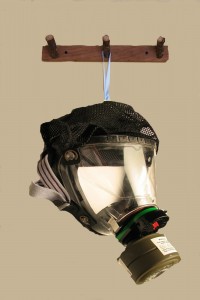 Along with cooler weather in general and a little more rain this Spring has come some relief from really dirty air in DFW.
Along with cooler weather in general and a little more rain this Spring has come some relief from really dirty air in DFW.
Last year at this time, we'd already had 6 "exceedences" of the old 1997 85 parts per billion ozone standard in May, and countless exceedences of the tougher new 75 ppb standard that is supposed to be attained by 2018. As of today, we haven't had one even one monitor reading above 85 ppb and only a handful in the 75 to 85 ppb range.
For the last two years in a row, DFW has seen a decrease in air quality, and an increase in smog. Could 2013 be the year that trend is halted?
Weather takes a lot, or even most of the credit. Cooler temperatures and more moisture are not conducive to ozone creation. But unlike during the recession, new car sales seem to be taking off the way the Rick Perry-approved engineers at the Texas Commission on Environmental Quality wanted them to two to three years ago. It's possible that the replacement of older dirtier vehicles with newer, cleaner ones by the thousands has finally made a difference you can't see. There's also the impact of cleaner operations at the Midlothian cement plants thanks to citizen victories over the last decade, (although the kilns are rapidly turning back into garbage burners), fewer coal burning plants downwind, and other improvements up and down the southeast to northwest axis that carries our predominant winds from Houston to here.
On the other hand, last June was pretty quiet until the 24th, and then all hell broke loose, with ozone levels into the triple digits. 2012 turned out to be a very bad year for safe and legal air.
And there's the unknowns that nobody's really examining closely – at least not in public. How much ozone pollution is being caused by the natural gas infrastructure in the Barnett Shale that's been built over the last decade and gets bigger every week? How much is the gas industry polluting upwind of us in places like Freestone County between here and Houston? Does the continuing boomtown growth in DFW population cancel out the improvement in individual vehicle emissions?
From a regulatory point of view, no matter how good or bad this summer is, we don't get credit for it either way. Another bad year wouldn't be held against us. Likewise, no violations this entire year wouldn't buy us any more goodwill from EPA. We're in a limbo period, where everyone is just waiting around for the average readings from 2015 -2018 to accumulate and tell us what category of compliance with the new 75 ppb standard we're in. While it would certainly help the cause if the region had some forward momentum in lowering the levels of smog going into 2015, officially, it makes no difference at all – unless you're breathing air. Then, according to EPA's own scientists, anything above 65-70 ppb is damaging to human health.
Theoretically, the TCEQ is supposed to be putting together yet another "DFW clean air plan" to reach that 75ppb standard, to be implemented sometime between now and 2015. The last time it tried to reach such a regulatory goal – the 85 ppb standard – it ended up with a plan that worsened air quality here by starting way too late and basically doing nothing but watching as new cars were going to clean up the air in the middle of a recession. (By the way, the "official" regulatory date of that failure is coming up next week even though the failure was certain last summer. Stay tuned to see if TCEQ acknowledges it in any way).
It's the summer of 2013. Any big changes that need to be in a summer of 2015 clean air plan should be being discussed and set in motion now, especially if they need 2015 state legislative approval, or lead times for industry to adapt. However, state or regional officials have yet to call a meeting of the local advisory group that's supposed to be monitoring the development of that plan. No date is set for such a meeting.
We can hope that a confluence of circumstances is making it possible to have cleaner air in DFW, but as long as Rick Perry is Governor, it's unlikely such an important public health goal will override political agendas.
An Idea Worthy of Our Consideration
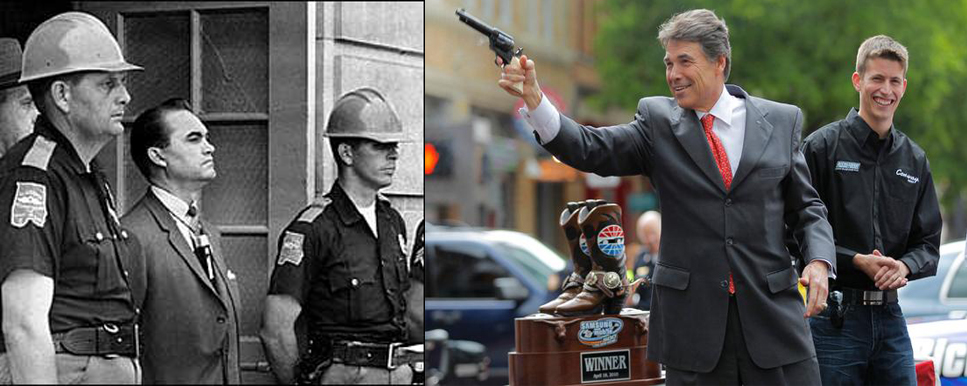 Under current law, EPA can designate states to enforce federal environmental laws if they, in fact, actually enforce the law and run competent programs. Once given by the EPA, rarely is this power taken away from a state.
Under current law, EPA can designate states to enforce federal environmental laws if they, in fact, actually enforce the law and run competent programs. Once given by the EPA, rarely is this power taken away from a state.
But when a state doesn't do a good job of enforcing the law or runs a program ineptly, the EPA considers taking back responsibility.That's happened recently in Iowa with the enforcement of the Clean Water Act. The Iowa Department of Natural Resources had been heavily criticized by state environmental groups for allowing huge CAFOs – Concentrated Animal and Feeding Operations to pollute the state's waterways. Beginning five years ago, they petitioned the EPA to take direct control of enforcing the Clean Water Act in Iowa. Their petition prompted an EPA investigation. The results confirmed the criticisms of the environmentalists and now the EPA is seriously thinking about stepping in.
Texas environmental groups should take note.
There is plenty of evidence on the public record to suggest Governor Perry and his Texas Commission on Environmental Quality are engaged in an active campaign of "nullification" of federal environmental laws just as Alabama Governor George Wallace was intent on negating federal civil rights legislation and rulings in the 1960's. But instead of standing in the schoolhouse door, Perry is using the world's second largest environmental agency to slow and obfuscate enforcement of the law in the name of his own over-the-top pro-industry agenda. The penalty for this kind of behavior 50 years ago was having the National Guard and Federal Marshals come into Alabama and make sure the law was followed. All we need in 2012 is for EPA to re-establish competent control over half a dozen federal environmental laws.
And if you don't think our Governor and his environmental agency are so nefarious as to construct a strategy to frustrate federal environmental law enforcement, what about stripping them of their responsibilities strictly because of their incompetence at administrating the federal programs. Take the last DFW air plan.…please. TCEQ kept insisting that the turnover of new cars on the road would almost singe-handedly produce the cleanest air in 25 years in North Texas. Not only was that forecast epically wrong – and off by a larger margin than the TCEQ's last clean air plan failure in 2007 – the plan actually left the region with dirtier air than when it began. It was bad science. Call this incompetence or call it incompetence by design. Either way, the result is the same. The Clean Air Act is not being effectively enforced by the state of Texas.
There are excellent reasons to believe that as long as Governor Perry and his TCEQ acolytes are making the decisions, DFW residents won't be able to breathe safe and legal air. It was obvious to many observers that needed pollution controls for industry didn't get included in the state's 2011 air plan for DFW because it would hinder the Governor's ability to raise money from this sector and it might appear to contradict his anti-regulatory political message. Rumor has it that Perry will run for Governor again in 2014 in order to re-position himself for another try at the Presidency in 2016. DFW's next clean air plan is due from the Perry TCEQ in….2015. As long as Perry has ambitions for higher office, your lungs are doomed
Along with trying to mobilize public opinion and rally local officials, maybe one thing DFW residents should be doing by way of self-defense is preparing a petition to EPA requesting it take over Texas' enforcement of the Clean Air Act.
TCEQ Lets Industry Avoid $90 Million in Fines, Asks Drivers to Pick Up the Tab
 Here in DFW, we've paid the price of continuing dirty air for the state's bias toward blaming all air quality problems in DFW on cars. As cars got so much cleaner, all of our smog problems were supposed to literally go "poof." This was almost the entire basis of the just-failed TCEQ clean air plan, and it didn't work. Turns out, there might be more causing our smog problems than just cars.
Here in DFW, we've paid the price of continuing dirty air for the state's bias toward blaming all air quality problems in DFW on cars. As cars got so much cleaner, all of our smog problems were supposed to literally go "poof." This was almost the entire basis of the just-failed TCEQ clean air plan, and it didn't work. Turns out, there might be more causing our smog problems than just cars.
Nevertheless, the bias persists because the ideological slant of the TCEQ's boss, Governor Perry, won't allow it to pursue a more balanced approach. Via the Houston Chronicle comes the latest way it's getting expressed in bad public policy – by letting pollution control measures be paid off by fees on individual drivers instead of fines assessed against large polluters that are targeted specifically for that purpose.
"The Texas Commission on Environmental Quality is asking the federal government for permission to waive fines for the region's 260 chemical plants, oil refineries and other large facilities.
The commission argues that it should not have to collect those fines because it already is raising money for smog-fighting programs through vehicle inspection fees and sales taxes for diesel equipment, among other revenue sources.
For years, the fees and taxes have funded a program that helps cover the cost of replacing or retrofitting dirty, old vehicles and equipment, such as locomotives, haul trucks and tugboats. The program has helped to improve air quality in the state's smoggiest cities."
The cover story for doing this is that the Commission would much rather the fine money be spent on actual pollution controls at the offending facilities – though there is nothing, especially the TCEQ, to make them do so – and that consumers would just pay the price down the line. We don't know what's more insulting – the incredibly thin and flimsy veneer of these excuses, or that the TCEQ expects any one to believe this clap-trap, which comes right out of our failed Governor's presidential campaign. What ever happened to getting tough on crime?
As for industry, well, it's just downright unfair Houston industry has to pay any fines at all for being out of compliance with a Carter-era ozone standard! Those that have seen the slides of Houston air pollution blowing into DFW will be particularly bedazzled by this plea from a corporate attorney,
"Jed Anderson, a Houston-based attorney who represents industry in regulatory matters, said the commission's proposal is a fairer distribution of the burden because cars and trucks produce so much smog-forming emissions. Even then, he said Houston should not have to pay at all, saying the amount of pollution that blows into Texas from other countries is enough to push the region out of compliance for ozone."
Funny, that's what TCEQ and their DFW local flunkies say about y'all. In fact, at the turn of the current century, DFW tried to get a pass for violating the ozone standard because, if you didn't count the stuff coming in from Space City, we would have, you know, theoretically been able to meet it.
Sorry Mr. Joe and Joann Six-Pack, but if you drive an inspected car that gets 70-90% pollution removal and deposits a thousand or so pounds of air pollution a year, you're not a constituent of TCEQ, you're the enemy.
On the other hand, if you operate a facility that not only pollutes the air with millions of pounds of pollution because you won't install the best equipment, but has also been breaking the law, "Right this way, Monsieur." Environmental Defense Fund's Dr. Elena Craft says in the Chronicle piece, "The commission is basically doing everything it can not to collect fines from industry" – and everything in its power to once again put the onus on drivers.

